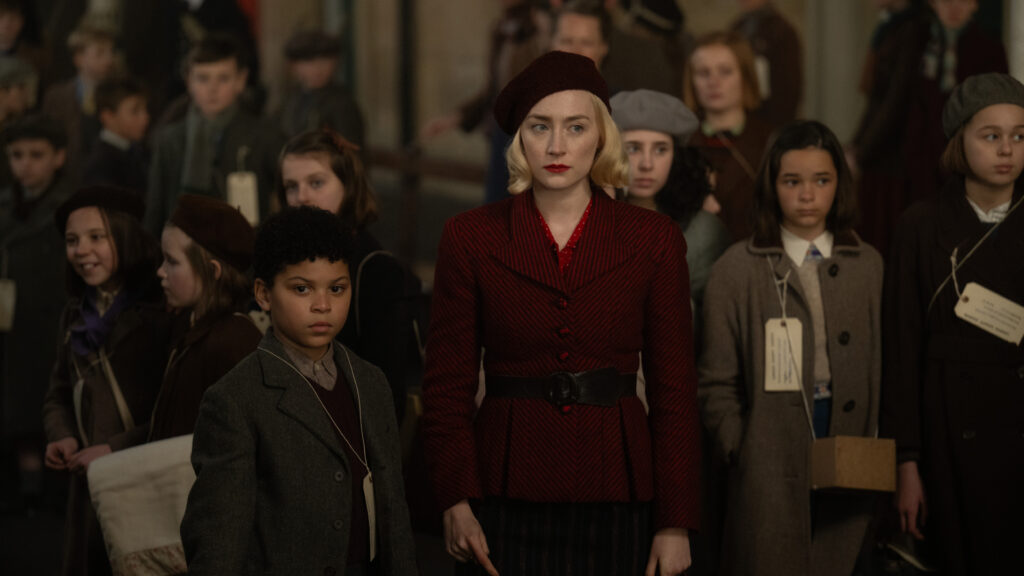The newly released film depicting the harrowing experiences of London during World War Two, particularly focusing on the infamous Blitz, has generated considerable discussion and critique among audiences and critics alike. Aimed at dramatizing the resilience, trauma, and humanity of Londoners amidst the relentless air raids, the film’s authenticity and historical representation have come under fire. In this review, we will delve deeper into the film’s narrative structure, character development, visual storytelling, and historical context, arguing that it falls short in capturing the true essence of the Blitz and the lived experiences of its survivors.
Historical Context of the Blitz
To understand the film’s narrative, it is crucial to explore the historical context of the Blitz. The term “Blitz” refers to the sustained bombing campaign conducted by Nazi Germany against Britain, primarily from September 1940 to May 1941. This period was marked by intense bombing raids on British cities, with London bearing the brunt of the attacks. The relentless bombing led to widespread destruction, resulting in approximately 40,000 civilian deaths in London alone and leaving countless others injured, homeless, or traumatized.
The British government implemented various measures to protect civilians, including the creation of air raid shelters and blackout regulations designed to minimize visibility from the air. Despite the horrific destruction, the Blitz also fostered stories of remarkable resilience, solidarity, and courage among the citizens of London. These narratives serve as critical touchpoints for understanding the emotional landscape during this tumultuous period, setting expectations for any film attempting to depict the era.
Narrative Structure and Thematic Exploration
The film opens with a striking depiction of the first air raid on London, thrusting viewers into the chaos, fear, and confusion experienced by civilians. The narrative unfolds through the lives of a small group of characters, representing diverse social backgrounds and experiences as they navigate life under the constant threat of bombing. However, as the story progresses, the film often leans into melodrama, prioritizing sensationalism over authentic storytelling.
Many critics argue that the film relies heavily on clichés and stereotypes, portraying Londoners as one-dimensional heroes or victims. This lack of nuanced character development detracts from the film’s ability to convey the complexities of human emotions and relationships in times of crisis. The characters are often relegated to archetypes, reducing their experiences to simplistic narratives that fail to capture the depth of the human condition during wartime.
For instance, one character may embody the stoic leader, rallying others around them, while another may be depicted as the fearful civilian, illustrating a narrow spectrum of responses to trauma. This oversimplification neglects the rich tapestry of reactions and coping mechanisms individuals employed during the Blitz, undermining the authenticity of their experiences.
Misrepresentation of Historical Events
A primary criticism of the film revolves around its historical inaccuracies. While creative liberties are often accepted in historical dramas, this film seems to stray too far from the truth, misrepresenting events and experiences that feel more fabricated than factual. Critics have highlighted instances where the timeline of significant events is distorted, leading to a misleading portrayal of the Blitz.
For example, certain key moments during the bombing raids are depicted in ways that exaggerate their impact or oversimplify the complex realities of life during wartime. The film tends to gloss over systemic issues faced by civilians, such as food shortages, mental health struggles, and the pervasive anxiety of living under constant threat. By focusing predominantly on sensational elements, the film risks trivializing the genuine hardships endured by Londoners during this harrowing time.
Cinematic Techniques and Visual Representation
From a visual standpoint, the film showcases impressive production values, featuring stunning cinematography that captures the bleak and haunting atmosphere of wartime London. The filmmakers have clearly invested considerable resources into creating a visually striking experience, complete with detailed sets, period-accurate costumes, and a compelling score that aims to evoke emotional responses. However, despite these aesthetic achievements, the film ultimately falls short in conveying the emotional gravity of the events it portrays.
The use of special effects to depict bombing raids, while visually impressive, often comes across as overly theatrical, drawing attention away from the emotional experiences of the characters. The film’s soundtrack, designed to heighten tension and drama, occasionally veers into melodramatic territory, undermining the sincerity of the narrative. For instance, scenes that could have fostered deep emotional connections are instead accompanied by dramatic musical cues that feel excessive and manipulative.

Public Reception and Critique
Audience reactions to the film have been mixed, with some praising its ambition and visual spectacle, while others express disappointment at its failure to resonate with the true experiences of Londoners during the Blitz. Social media platforms have become arenas for discussion, with viewers voicing their critiques regarding the film’s authenticity and portrayal of historical events.
Critics have pointed out that the film appears to cater more to an international audience than to those with a genuine connection to the history it attempts to depict. This pursuit of broad appeal may have influenced the filmmakers to prioritize entertainment value over accuracy, resulting in a narrative that feels disingenuous to those who are well-versed in the realities of life during the Blitz.
The film’s portrayal of community resilience, while essential to the narrative, is sometimes overshadowed by melodramatic tropes. The filmmakers risk diluting the real stories of courage and solidarity that characterized this period, opting instead for a formulaic approach that fails to honor the memories of those who lived through the bombing campaigns.
Previous Film Representations of the Blitz
When evaluating this new film, it is essential to consider previous representations of the Blitz in cinema. Classic films like “The Dam Busters” and “A Canterbury Tale” provide nuanced explorations of British resilience and communal spirit during World War Two, often emphasizing the human experience and the emotional toll of war. In contrast, this new film seems to struggle with striking a balance between drama and authenticity, resulting in a portrayal that feels disconnected from the historical context.
In recent years, filmmakers have increasingly recognized the importance of accurate historical representation, as audiences become more discerning and demand authenticity. Documentaries and historical dramas that prioritize factual accuracy and personal narratives tend to resonate more profoundly with viewers, creating a more substantial emotional impact. This raises the question of whether filmmakers can successfully balance entertainment and education, ensuring that the stories told on screen remain true to the lived experiences of those who endured the Blitz.
In conclusion, the new film about London’s World War Two bombing presents a visually striking but ultimately flawed portrayal of the Blitz. While it aims to capture the resilience and humanity of Londoners amidst adversity, the film’s reliance on clichés, historical inaccuracies, and melodramatic storytelling undermines its potential impact.
For those seeking a genuine understanding of the Blitz and the experiences of those who lived through it, this film may leave much to be desired. The challenges of balancing entertainment with truth in historical storytelling remain pressing, as filmmakers navigate the complexities of representing such significant events.
As discussions continue to unfold around the film, it serves as a reminder of the importance of historical accuracy in storytelling and the responsibility filmmakers have to honor the memories of those who endured the hardships of war. The hope remains that future cinematic endeavors will strive for a deeper understanding of the past, ensuring that the lessons of history are not only remembered but also respected.
The stakes are high, and as audiences grapple with their expectations and the realities of representation, the film industry faces the challenge of redefining narratives that honor the struggles and triumphs of individuals who lived through extraordinary times. The ongoing dialogue surrounding this film exemplifies the broader societal need for authenticity in historical storytelling, reinforcing the idea that the past should be remembered and respected through a lens of truthfulness and empathy.



